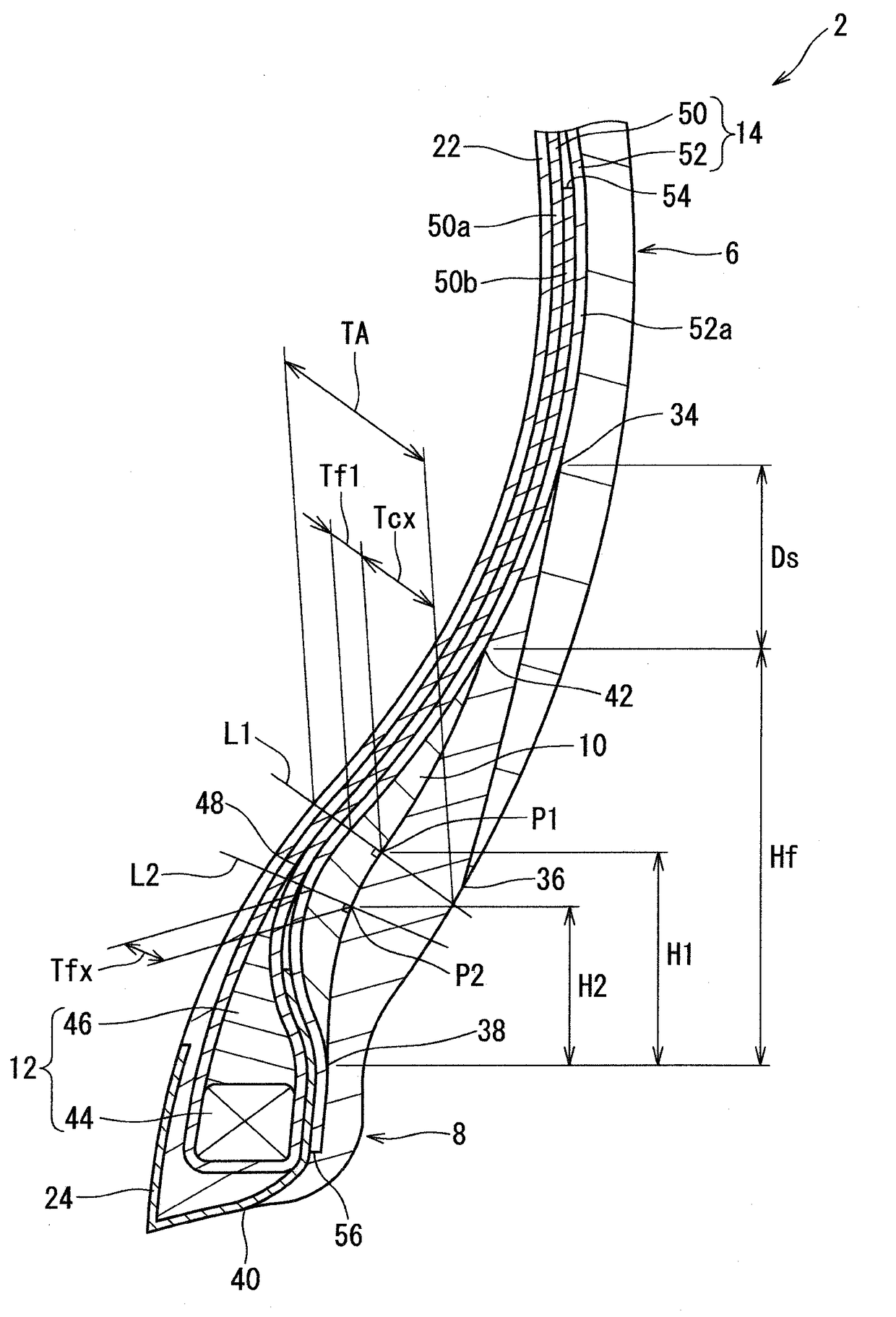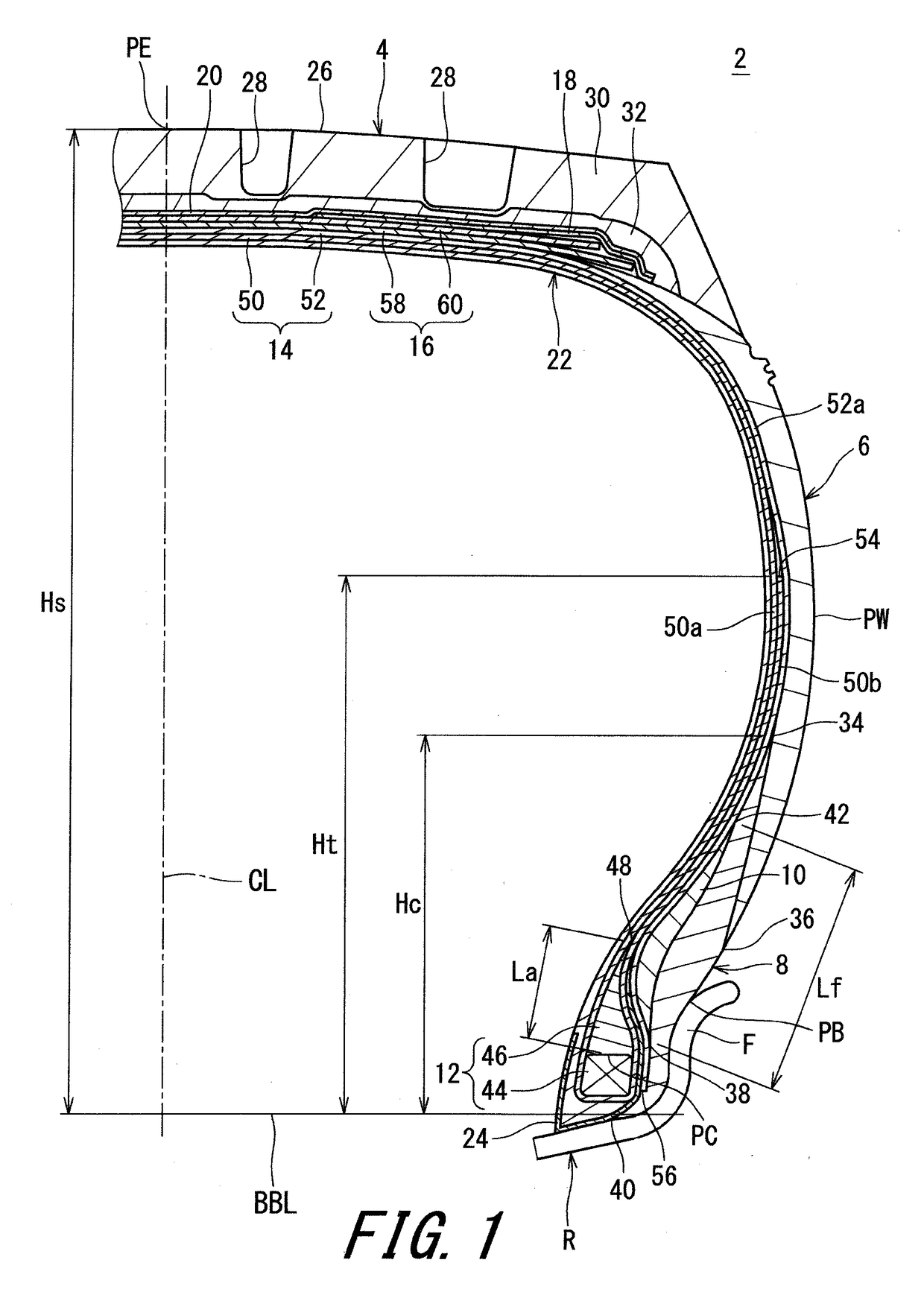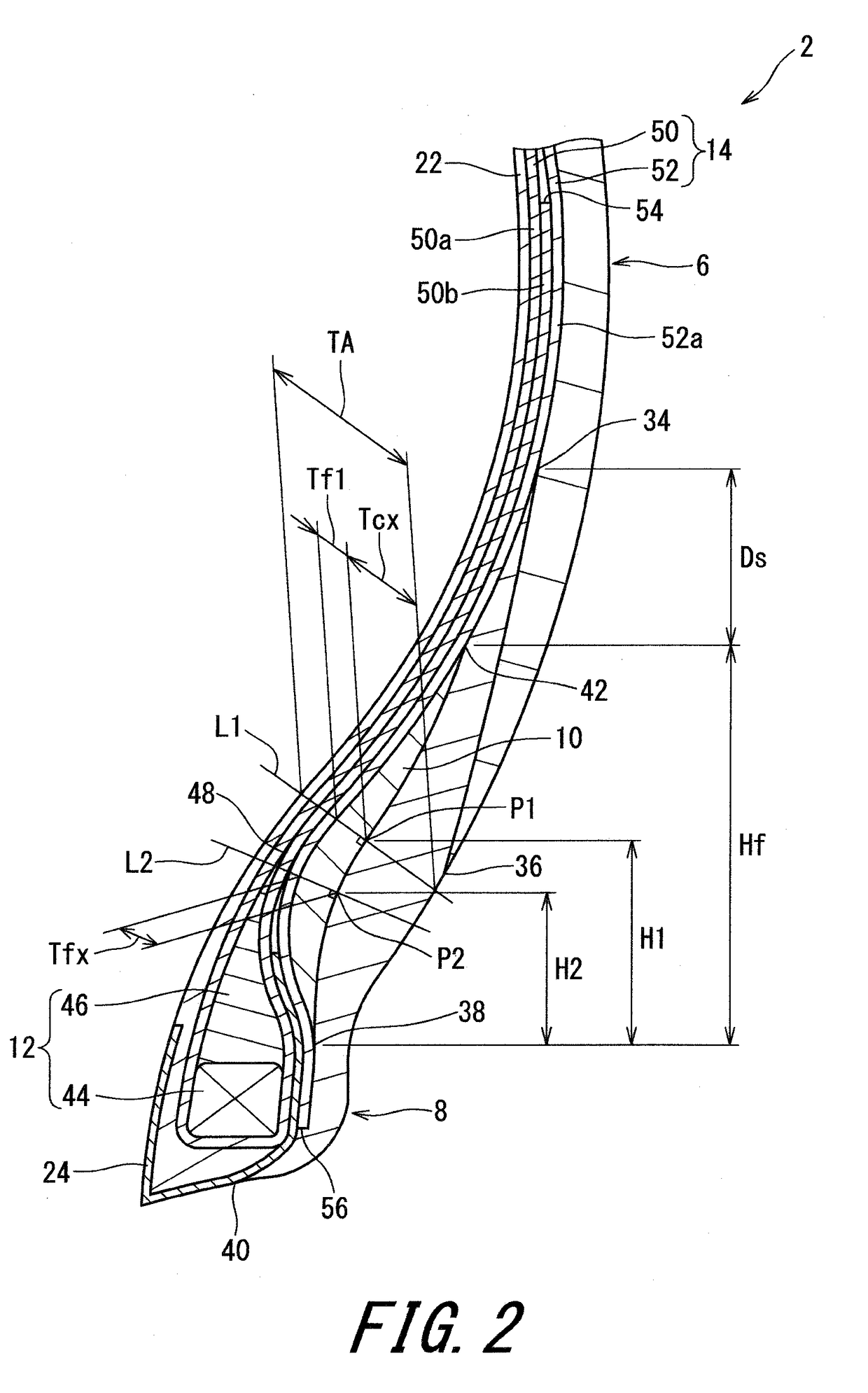Pneumatic tire
a technology of pneumatic tires and bead parts, applied in the field of pneumatic tires, can solve the problems of increasing heat generation, tire flexure, and large achieve the effects of reducing flexure in the bead portion, reducing flexure, and reducing flexur
- Summary
- Abstract
- Description
- Claims
- Application Information
AI Technical Summary
Benefits of technology
Problems solved by technology
Method used
Image
Examples
first embodiment
[0061]FIG. 1 shows a pneumatic tire 2. In FIG. 1, the up-down direction represents the radial direction of the tire 2, the left-right direction represents the axial direction of the tire 2, and the direction orthogonal to the surface of the drawing sheet represents the circumferential direction of the tire 2. In FIG. 1, an alternate long and short dash line CL represents the equator plane of the tire 2. The tire 2 has a shape that is symmetric with respect to the equator plane except for a tread pattern.
[0062]The tire 2 is mounted on a rim R. The rim R is a normal rim. The tire 2 is inflated with air. The internal pressure of the tire 2 is a normal internal pressure.
[0063]In the present invention, the dimensions and angles of components of the tire 2 are measured in a state where the tire 2 is mounted on a normal rim, and the tire 2 is inflated with air to a normal internal pressure, unless otherwise specified. During the measurement, no load is applied to the tire 2. In the descrip...
second embodiment
[0124]FIG. 3 shows a pneumatic tire 102. In FIG. 3, the up-down direction represents the radial direction of the tire 102, the left-right direction represents the axial direction of the tire 102, and the direction orthogonal to the surface of the drawing sheet represents the circumferential direction of the tire 102. In FIG. 3, an alternate long and short dash line CL represents the equator plane of the tire 102. The tire 102 has a shape that is symmetric with respect to the equator plane except for a tread pattern.
[0125]The tire 102 is mounted on a rim R. The rim R is a normal rim. The tire 102 is inflated with air. The internal pressure of the tire 102 is a normal internal pressure.
[0126]In FIG. 3, reference character PB represents a specific position on the outer surface of the tire 102. The position PB corresponds to an outer side edge, in the radial direction, of a contact surface on which the tire 102 and the rim R contact with each other. The position PB is a separation point...
third embodiment
[0194]FIG. 6 shows a pneumatic tire 202. In FIG. 6, the up-down direction represents the radial direction of the tire 202, the left-right direction represents the axial direction of the tire 202, and the direction orthogonal to the surface of the drawing sheet represents the circumferential direction of the tire 202. In FIG. 6, an alternate long and short dash line CL represents the equator plane of the tire 202. The tire 202 has a shape that is symmetric with respect to the equator plane except for a tread pattern.
[0195]The tire 202 is mounted on a rim R. The rim R is a normal rim. The tire 202 is inflated with air. The internal pressure of the tire 202 is a normal internal pressure.
[0196]In FIG. 6, reference character PB represents a position at an outer side edge, in the radial direction, of a contact surface obtained by the outer surface, in the axial direction, of the tire 202 and the flange surface of the rim R contacting with each other. The position PB is obtained when the t...
PUM
 Login to View More
Login to View More Abstract
Description
Claims
Application Information
 Login to View More
Login to View More - R&D
- Intellectual Property
- Life Sciences
- Materials
- Tech Scout
- Unparalleled Data Quality
- Higher Quality Content
- 60% Fewer Hallucinations
Browse by: Latest US Patents, China's latest patents, Technical Efficacy Thesaurus, Application Domain, Technology Topic, Popular Technical Reports.
© 2025 PatSnap. All rights reserved.Legal|Privacy policy|Modern Slavery Act Transparency Statement|Sitemap|About US| Contact US: help@patsnap.com



